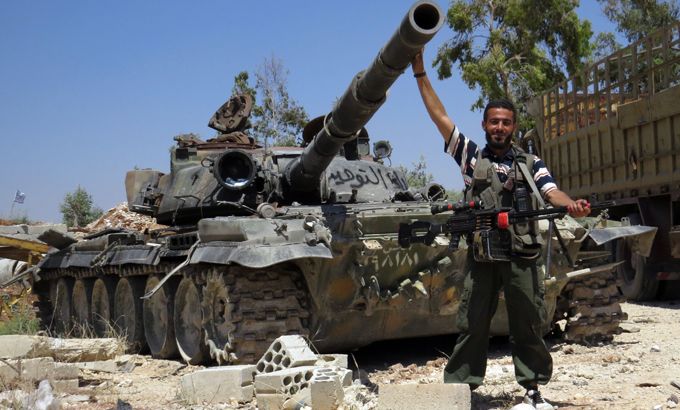
Syria’s call for arms
As the US answers the opposition’s call for arms, how does this change the situation on the ground?
It has been a week of major developments in the Syrian conflict.
On Thursday, US President Barack Obama agreed to expand the level of US military support for the Syrian opposition fighters. The decision comes after the White House said it had conclusive evidence chemical weapons were being used by the Assad government, an act Obama has repeatedly described as crossing a red line.
”I
want to see Assad gone. The world community with the exception of countries such as Iran and Russia, want to see Assad gone …. What you have is a very reluctant US administration … that is not seeking intervention but now feels morally bound to support the people of Syria and as a result to supply the arms.”]
The Syrian government slammed the decision saying Washington’s statements were lies based on fabricated information.
“What seems to be happening is that they [Americans] are saying, we’ve got this evidence about chemical weapons being used …. and we are sure that … the Syrian government was the one to use it. And everyone seems to be believing them without any show of evidence,” Ammar Waqqaf, a Syrian political activist, told Al Jazeera.
Meanwhile, the Obama administration is saying little about how or what type of weapons it will provide to the opposition. But it has sparked a new debate about whether peace between the rebels and the Assad government can be struck at the bargaining table.
Syrian opposition forces are asking for more help on the ground. The commander of the main rebel group is urging western countries to create a no-fly zone.
Free Syrian Army chief Selim Idris is also calling for anti-aircraft and anti-tank missiles.
“I would like to tell our American friends and American people, we are preparing for a big offensive in Aleppo. The regime is trying, supported by the fighters of Hezbollah, is trying to recapture the city and the suburbs. And we are now in most need, we hope that our friends, will not leave us alone facing the troops of the regime and the fighters of Hezbollah and Iranian fighters.”
The war in Syria has gone on for over two years now, and while it does not look like it is ending anytime soon, the human cost continues to rise.
Last week, a United Nations’ report found that at least 93,000 people have been killed in the conflict. That figure, however, is just an estimate, and the official number could be a lot higher.
According to the UN High Commissioner for Human Rights, more than 5,000 killings were documented every month since last July. Besides, the UN also found that some 6,500 children were among those killed in fighting across the country.
So as the US answers the rebels’ call for more arms, how does this change the situation on the ground? And what does this mean for the Syrian conflict?
To discuss the latest developments, Inside Syria, with presenter Fauziah Ibrahim, discusses with guests: Khaled Saleh, the head of the media office of the Syrian National Coalition; Mark Kimmitt, a former US state department official under President George W Bush and a retired Brigadier General who also served as deputy assistant secretary of defence for the Middle East; and Ammar Waqqaf, a Syrian political activist.
|
“The United States are sending a signal to different countries in the world now … there is a high level collaboration of evidence showing that the Assad regime, perhaps one of the most brutal regimes of the 21st century … is willing to use those chemical weapons against innocent civilians …. The US now is going to be a lot more serious in stopping the Assad regime … and shift the balance of power.” – Khaled Saleh, the head of the media office of the Syrian National Coalition |